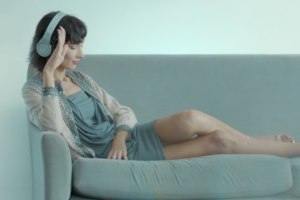This will be the final in this series regarding the center extraction workflow in FCPX. Since I last wrote the articles, we got the 10.3 upgrade + 2 updates. Apart from the additional tools we got, some of the problems I ran into in 10.2.3 were fixed. This article will not focus on the new features that many others have written about. Instead, I will show the ways the update has made it easier to use this workflow, as well as some workarounds.
First and foremost, the Spatial conform problem is now gone. No longer do we need to worry about whether to set Spatial Conform to None before it goes through the XML process, nor the order of the XML process. (i.e. Shot Notes X first, then XML to Sync-N-Link X or Sync-N-Link X then Shot Notes X). In fact, now that is a non-issue, I’m gonna boldly say you can put the XML through whatever third party software first, then set Spatial Conform after you put into the timeline and you’ll be fine.
Secondly, manually synchronizing footage and audio in FCPX is a pain when dealing with non-standard video resolutions. For those of you who don’t have Sync-N-Link X, even after all your footage is sorted according to timecode and you select Synchronize clip, you’ll have to enter the dimensions of the footage manually everytime. If you let FCPX do it automatically, it will go to the closest resolution it understands and then fit the footage into that dimension. Therefore, the Spatial Conform on the timeline will not work unless you set the timeline to accommodate this.
Thirdly, using the timeline settings to be exact to 2.4:1 resulted into a weird playback situation. Although on the computer it’s displaying the aspect ratio correctly, when played back through an breakout box it displayed 16×9. It was actually trying to show the footage beyond 16×9 but that’s what the monitor center extracted. This wasn’t a problem when I made “Aspects of Ratio” because it was a 16×9 project. So to over come this, I tried using Letterbox Filter with 2.35 setting on the clip but it still showed 16×9 on the SDI/HDMI monitor. Therefore, the workaround I found was to make a classic 16×9 timeline then use an adjustment layer on top with the Letterbox effect set to 2.35:1.
Next, the footage calculation methodology. There is currently a production for a streaming service (wink, wink, nudge, nudge). The production is using 6K for 5K center extraction for normal speed and 5K for 4K center extraction for slow-motion. This causes a major problem because the formulation to get the footage to fit into the timeline for center extraction is different. The DIT on-set was baffled because he rendered using the original formula and caused the footage to not be able to center extract correctly.
Since we now have upto 8K at our disposal, how do we make this center extraction work into FCPX? We have to break the calculations into the steps below:
Step 1 – Calculate the relationship of the source material and the center extraction. For this example, I will use 6K to 5K. 6144 divided by 5120 is 1.2 (which is 20% above 5K)
Step 2 – Pay attention to the resolution on the camera setting. RED has 6K, 6K HD, 6K 2:1. That will determine your aspect ratio and will help you calculate the dimension for the ProRes. In this example, we will use 6K 2:1
Step 3 – Determine what resolution you prefer to edit. I usually work with 720p, but for this example we’ll use 1080p.
Step 4 – Use the Horizontal resolution (the left number) and multiply with the number we got from Step 1. So 1920 x 1.2 = 2304
Step 5 – Use the aspect ratio of the source material to get the vertical resolution (the right number). So 2304 / 2 = 1152
Step 6 – Make ProRes using resolution results from Step 4 & 5 (2304 x 1152)
Step 7 – In FCPX, import all footage. Select all and change Spatial Conform to None.
Step 8 – Make a new Project with the delivery aspect ratio in mind. In this example, I’m delivering for 2.4:1 Therefore, 1920/2.4=800. The timeline resolution is 1920×800. (If you plan on using an SDI monitor, I suggest you use 1080p preset)
Step 9 – Put footage into timeline. Viola! Center extracted footage (Add adjustment layer with Letterbox set to 2.35 for correct viewing in external SDI/HDMI monitor)
There you go. You now have the formula to overcome your upcoming center extraction project. It is a little complicated but it’s worth learning. For those of you who cannot be bothered with the math, below is the cheat sheet.

Finally, the Resolve Settings. How do we fit multi-resolution source material into the timeline for delivery? We do a reverse resolution calculation. Doing a center extraction is simply taking the center part of the footage frame without scaling. When we use Resolve, we need to have in mind the delivery resolution as our target. If we want to deliver 4K with the current project aspect ratio, we need to calculate 4096/2.4=1706. Therefore, the project setting is 4096×1706. This is where it gets very tricky. We are now working in a 4K timeline but we want to center extract 6K and 5K material into this timeline. Most people will make the mistake of using “Scale entire image to fit” in the “Mismatched Resolution” setting, then zoom into the shooting frame. This is not a good idea because it will cause the picture to be slightly soft and increase noise due to the exaggeration of the pixel.
A better way to do this is to set to “Mismatched Resolution” setting to “Center Crop to no resizing”. 5K footage will fit perfectly into the timeline. However, the 6K materials will center extract to the 4K area and will look like we zoomed into the picture. In order to correct this, we go to the Scale slider and zoom out 20% because we’re simulating 6K as 5K source. Do that for every 6K source and your timeline will be perfect. The BONUS by zooming out of the picture, we are effectively squeezing the pixel therefore reducing the noise in the picture.
Hopefully that overcomes some of the obstacles you may have encountered. Once NDAs are lifted, I hope they give me permission to share some of the case studies that have gone through this process.











